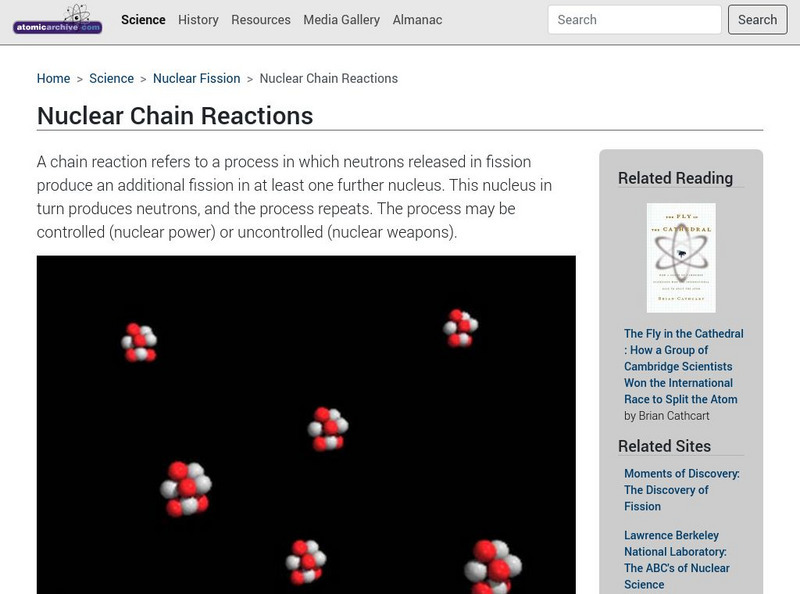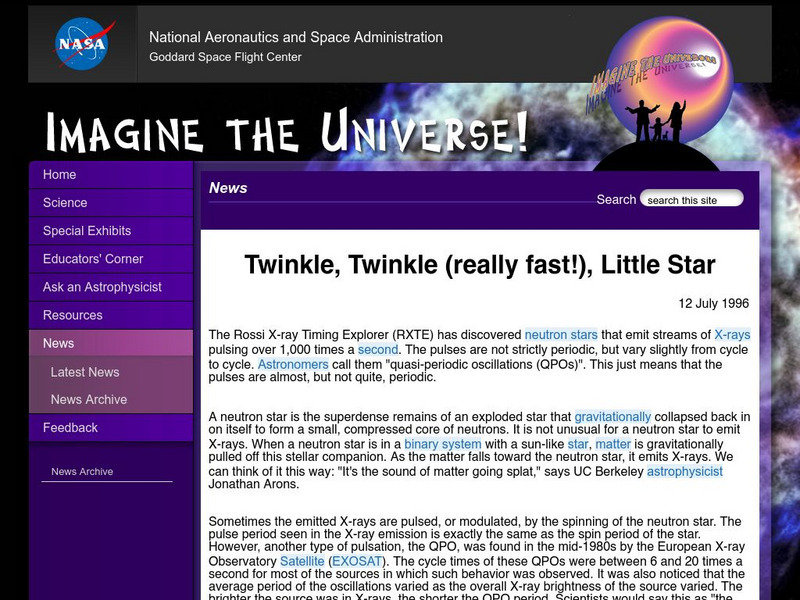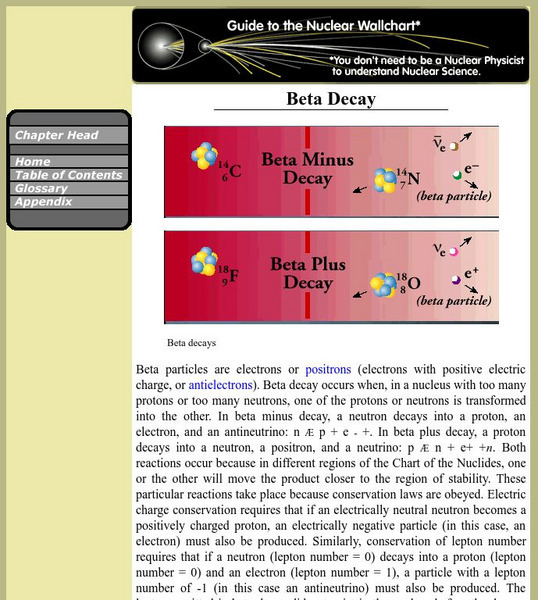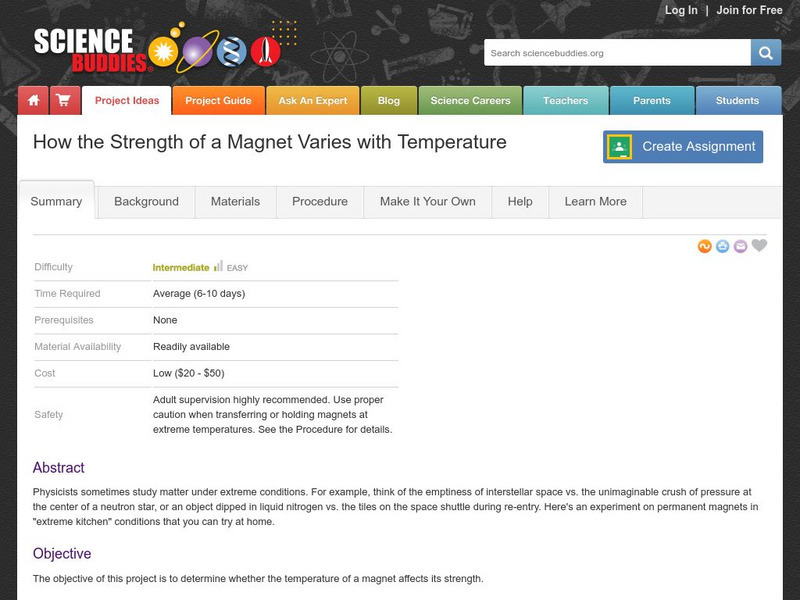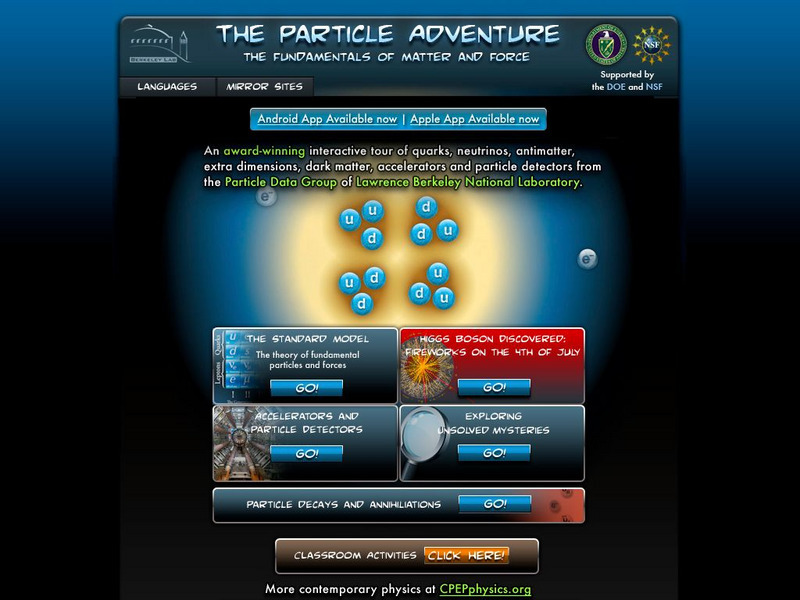Atomic Archive
The Atomic Archive: Nuclear Chain Reactions
A couple of pages of text and graphics describing nuclear chain reactions. The means by which neutrons intiate and sustain a reaction is explained. A second page describes the complications associated with uncontrolled nuclear chain...
Sophia Learning
Sophia: James Chadwick
This lesson explains the discovery of the neutron and Chadwick's experimental process.
Sophia Learning
Sophia: Isotopes: Lesson 9
This lesson will define an isotope and explain what happens if the number of neutrons in an atom changes. It is 9 of 9 in the series titled "Isotopes."
Sophia Learning
Sophia: Isotopes: Lesson 1
This lesson will define an isotope and explain what happens if the number of neutrons in an atom changes. It is 1 of 9 in the series titled "Isotopes."
Sophia Learning
Sophia: The Atom: Lesson 2
This lesson will illustrate that an atom is mostly empty space and has a positively charged, massive core (containing both protons and neutrons called the nucleus) surrounded by negatively charged electrons. It is 2 of 3 in the series...
NASA
Nasa: Imagine the Universe: "Twinkle, Twinkle (Really Fast!), Little Star"
"The Rossi X-ray Timing Explorer has discovered neutron stars that emit streams of X-rays pulsing over 1,000 times a second." Visit this site to read the rest of this article. Site offers additional resources as well as a Teacher's Corner.
Lawrence Berkeley National Laboratory
Berkeley Lab: Beta Decay
Entry explores the process of beta decay which occurs when, in a nucleus with too many protons or too many neutrons, one of the protons or neutrons is transformed into the other.
Ducksters
Ducksters: Science for Kids: The Atom
Kids learn more about the science of the atom. Electrons, neutrons, and protons make up the smallest bits of matter.
ClassFlow
Class Flow: Element Math
[Free Registration/Login Required] In this flipchart students determine the number of protons, neutrons, and electrons of elements essential to life. They use Activotes to check knowledge gained. Students create a Bohr Model.
Science Struck
Science Struck: What Makes Up an Atom?
Describes the structure of an atom and the characteristics of the electrons, neutrons, and protons inside it. Includes some interesting facts about atoms.
Mocomi & Anibrain Digital Technologies
Mocomi: Structure of an Atom
An atom is made of three parts - protons, neutrons, and electrons. Here you can explore these different parts.
Science Buddies
Science Buddies: How the Strength of a Magnet Varies With Temperature
Physicists sometimes study matter under extreme conditions. For example, think of the emptiness of interstellar space vs. the unimaginable crush of pressure at the center of a neutron star, or an object dipped in liquid nitrogen vs. the...
University of Colorado
University of Colorado: Ph Et Interactive Simulations: University of Colorado: Build and Atom
Build an atom out of protons, neutrons, and electrons, and see how the element, charge, and mass change. Then play a game to test how the ideas work!
PBS
Pbs Newshour Extra: Neuroscience Basics Through Puzzles and Dance
This interesting lesson plans uses giant neutron puzzles, the game of telephone, and dance to explain how transmitters and receptors work in neurotransmission.
University of Colorado
University of Colorado: Ph Et Interactive Simulations: Build an Atom
Build an atom out of protons, neutrons, and electrons, and see how the element, charge, and mass change. Then play a game to test your ideas!
Utah Education Network
Uen: Atomic Model Construction
Students create models of atoms then compare the various aspects of the atoms including; relative size, charge, positions of subatomic particles, and identity of the atom based on proton, neutron, and electrons with the class.
Other
Scientists Say Star Collision Caused Dinosaur Extinction
"Israeli scientists have a new theory on why the dinosaurs became extinct: cosmic radiation that bombarded the Earth following the collision of two neutron stars." This article discusses the details of the theory.
Atomic Archive
Nuclear Fusion: The Hydrogen Bomb
From the Atomic Archive - the online companion to the award-winning CD-ROM. This page (and the couple that follow from it) describe the use of fusion reactions in a hydrogen bomb. A schematic diagram of an H-bomb is given and discussed....
Other
Jodrell Bank Centre for Astrophysics: A Tutorial on Radio Pulsars
A extensive site that describes the history of the discovery of pulsars along with definitions, characteristics, locations, and distances of pulsars, plus much more.
Oak Ridge National Laboratory
Human Genome Project: Unearthing Buckyballs
Resource provides great information on buckyballs. Description of a process to identify and determine the size and type of fullerenes. Excellent movie on basic fullerene information. Pictures are also included for further information....
Lawrence Berkeley National Laboratory
Berkeley Lab: The Particle Adventure
Visit this site for an interactive tour of the atom and all aspects of particle physics. View the animations available with almost every description on this site. A great place for the fundamentals of particles and forces including a...
American Chemical Society
Middle School Chemistry: Periodic Table
Students explore the periodic table and learn the basic information given for elements: the name, symbol, atomic number, and atomic mass for each element.
Vision Learning
Visionlearning: Atomic Theory: Bohr and the Beginnings of Quantum Theory
Description of the ideas and experimentation that led to quantum theory. Focus on electrically charged ions and isotopes.
Other
Fermilab: Hyperons & Neutrinos
The third paragraph pinpoints the importance of hyperons in particle research. Hyperons and neutrinos share characteristics of the weak force. Complex stuff, but the real deal. Parts of this report may be very useful. Many photos, slow...
Other popular searches
- Neutron Proton Electrons
- Protons Neutrons Electrons
- Protons, Neutrons, Electrons
- Protons, Neutron, Electrons
- Protons and Neutrons
- Protons, Electrons, Neutrons
- Electrons, Neutrons, Protons
- Number of Neutrons
- Protons Neutrons, Electrons
- Isotopes Calculate Neutrons
- Proton Neutron and Electron
- Charge Free Neutrons
